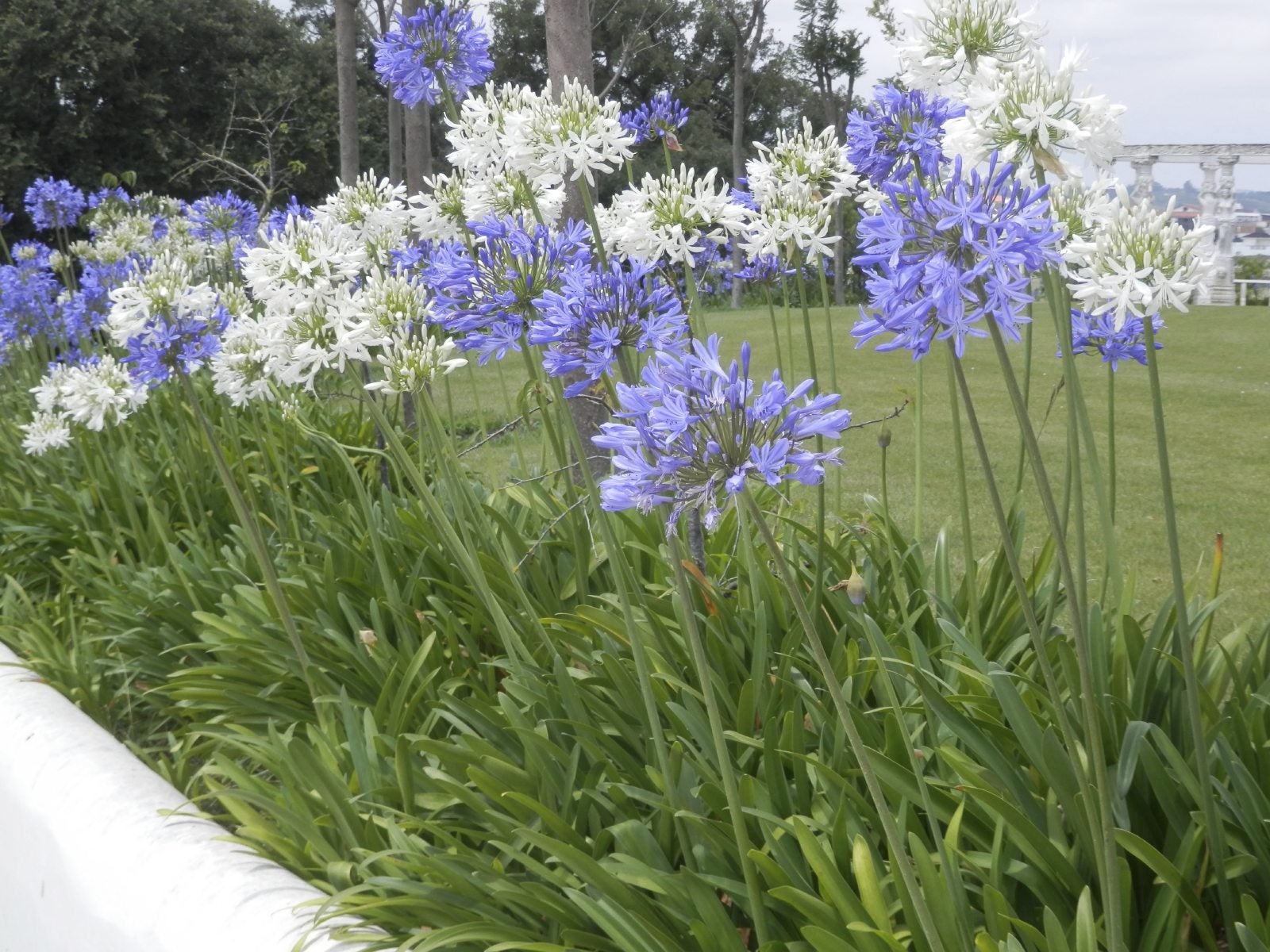Agapanthus Winter Care: Care Of Agapanthus Plants In Winter


Agapanthus is a tender, herbaceous flowering plant with an extraordinary bloom. Also known as Lily of the Nile, the plant rises from thick tuberous roots and hails from South Africa. As such, they are only hardy to United States Department of Agriculture zones 9 to 11. For most of us, this means winter care for agapanthus may require lifting the tubers and storing them. However, there are two types of Agapanthus, one of which is a hardy variety and may survive in soil with a little TLC.
How to Care for Agapanthus in Winter
There are at least 10 species of Agapanthus with some listed as deciduous and some evergreen. The deciduous species are a bit hardier, as they come from a cooler part of Africa. A trial in the UK showed these varieties could survive outdoors with a little protection. If you wish to be certain your tubers will bloom again, you can also choose to lift them and store them indoors. Agapanthus winter storage is similar to any lifted bulb. Winter care for Agapanthus may depend upon which variety of the plant you have. If you don't know if the tubers are deciduous or evergreen, you should take steps to lift the tubers before cold temperatures arrive or risk losing the plant. This special Agapanthus winter care should occur when the plant is evergreen, unknown or grown in northern regions with hard freezes. Cut back the foliage at the end of summer or early fall before any freezing activity takes place. Dig up the tubers and brush off the soil. Allow the tubers to dry out for a few days in a dry, warm location. Then store the tubers wrapped in newspaper in a cool, dark location. Optimum temperatures for Agapanthus winter storage are 40 to 50 degrees F. (4-10 C.). Replant tubers the following spring.
Agapanthus Winter Care for Container Plants
If you have the evergreen variety, it might be a good idea to plant this in a container. That way you can bring the pot indoors to grow and protect it from the cold. A few notes on how to care for Agapanthus in winter interior conditions:
- Suspend fertilizing until spring.
- Keep the plant slightly on the dry side until May.
- Care of Agapanthus plants in winter still means providing bright light, so choose a sunny window in a warm part of your home.
Deciduous plant foliage will die back and should be cut off after it is yellow. Wait until it dies back, however, to allow the plant time to gather solar energy to refuel the next season's bloom. Divide your Agapanthus every four to five years at the time you bring them indoors.
Outdoor Care of Agapanthus in Winter
If you are fortunate enough to live in a milder climate, you can simply leave the plants in the ground. In the U.K. trials, the plants were exposed to a fairly severe winter season in London and survived beautifully. Cut back deciduous foliage when it dies and mulch over the plant to a depth of at least 3 inches (8 cm.). Pull the mulch away a bit in spring to allow the new growth to push through. Evergreen plants will need occasional water during the winter months if you live in a dry region. Only water when the top 2 inches (5 cm.) of soil are dry. As with indoor plants, suspend fertilizing until spring. Once spring and its warm temperatures arrive, begin a fertilizing routine and regular watering. In a few months, you should have the majestic ball-like blooms as a testament to your good winter care.
Sign up for the Gardening Know How newsletter today and receive a free copy of our e-book "How to Grow Delicious Tomatoes".

Bonnie Grant is a professional landscaper with a Certification in Urban Gardening. She has been gardening and writing for 15 years. A former professional chef, she has a passion for edible landscaping.